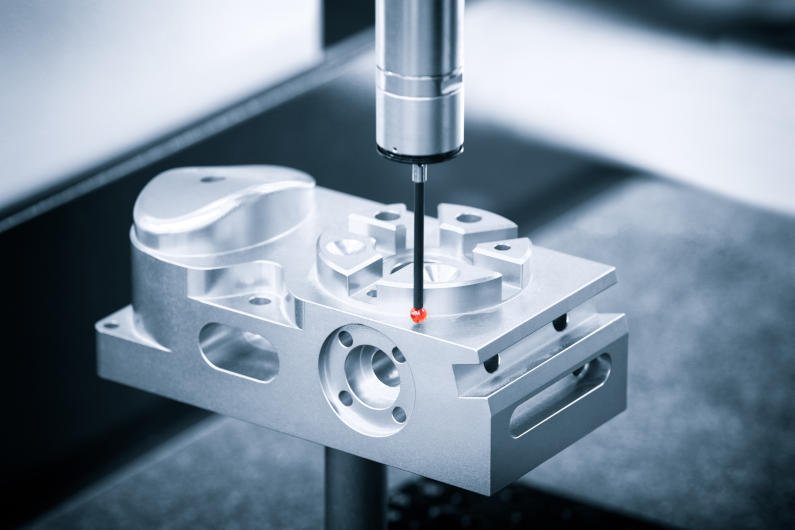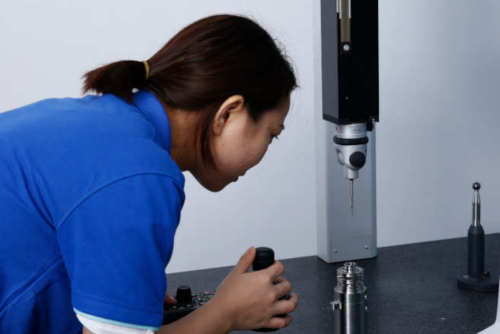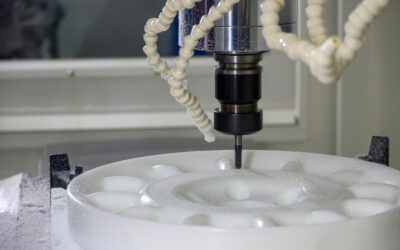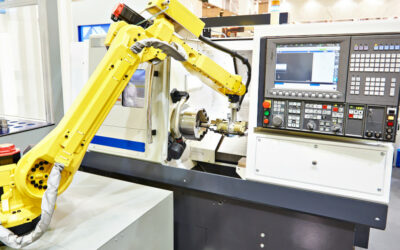Product designs were pretty simple in the early 20th century, and product designers were flexible with accuracy and dimensional tolerance requirements. As a result, machine shops had no problem fabricating parts using conventional milling machines and ensuring quality control using hand tools like calipers, micrometers, and comparators.
But as product designs became more complex and manufacturing technologies became more advanced, there arose the need for more advanced quality control devices that eliminate human error. This led to the development of the first Coordinate Measuring Machine (CMM) by Ferranti in 1959.
A Coordinate Measuring Machine (CMM) is an essential quality control device used by top-tier machine shops today, and in this article, we will cover the basics of CMMs. We will explain how a CMM works, its applications, and the different types of coordinate measuring machines available today.
What is a Coordinate Measuring Machine?
A coordinate measuring machine (CMM) is a quality control device that measures a part’s height, width, and depth to determine whether it satisfies design requirements.
A typical coordinate measuring machine (CMM) features a probe that senses the position of a point in space and measures it from a three-dimensional reference position. So when you move the probe tip over a workpiece, the probing system gathers points, forming a “point cloud” that outlines the shape of the workpiece.
The process by which the probe points are measured and converted to a shape outline is handled by special coordinate processing software.
What is a Coordinate Measuring Machine Used For?
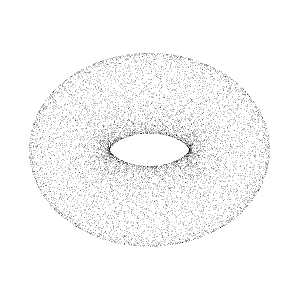
Example of a “point cloud” by Lucas Vieira, Public domain, via Wikimedia Commons
The “point cloud” formed by the coordinate measuring machine allows you to confirm a parts conformance to design intent and tolerance requirements. Top-tier machine shops typically integrate these machines in their quality control (QC) department to test the accuracy and precision of manufactured parts against their customer’s specifications.
Related Post: Quality Control for CNC Machining
Through reverse engineering, machine shops also use CMMs to create replicas of custom designs (or physical samples). During this process, a machinist moves the sensitive probe over the physical sample, and the CMM performs a series of operations to convert this sample into a 3D CAD drawing.
The machinist then uses these CAD models to create replicas of the physical samples using manufacturing technologies like CNC machines and 3D printers. This reverse engineering application of CMMs comes in handy when making obsolete parts, such as vintage car engines or gas turbine parts.
Types of Coordinate Measuring Machines
Coordinate measuring machines typically come in four distinct types:
- Bridge CMMs
- Gantry CMMs
- Cantilever CMMs
- Horizontal arm CMMs
#1 Bridge Coordinate Measuring Machines
Bridge-type CMMs are the most common type of coordinate measurement machines. They typically feature a very stable anchor for the measuring apparatus and are the best for measuring machined parts with the highest accuracy and tightest tolerances requirements.
However, bridge-style CMMs are generally limited to measuring small to midsize machined parts that you can easily lift onto the table. WIth bridge CMMs, you might also experience challenges when trying to access some parts to be measured. This is because of the bridge’s upright anchor holding the x-axis.
#2 Gantry Coordinate Measuring Machines
Gantry CMMs are quite similar to bridge CMMs but differ slightly in design and capability.
Unlike the bridge-style CMM, a gantry coordinate measuring machine is directly mounted on the floor with its bridge raised on pillars. This allows the gantry CMM to accommodate and access machined parts having higher volumes and more complex geometries than what the bridge CMMs are designed to handle.
The measuring range for gantry CMMs typically varies from (1 x 2 x 1 m) to (5 x 9 x 3m) in a 3D coordinate system.
#3 Cantilever Coordinate Measuring Machines
Cantilever CMMs are supported at one point only, making them less rigid than gantry and bridge-style coordinate measuring machines. When used to measure low-weight machined parts, their single-point support allows them to move more quickly and achieve higher accuracy than other CMMs.
Cantilever CMMs are generally limited to measuring small machined parts, measuring gauges, and master parts.
#4 Horizontal Arm Coordinate Measuring Machine
Horizontal arm CMMs mount scanning probes (or touch probes) horizontally rather than vertically, as with the other types of CMM. This unique design allows them to measure large surfaces or machined parts with difficult-to-reach features.
Keep in mind that horizontal arm CMMs are less accurate than other CMM types. Nevertheless, they are the ideal CMM type for measuring large thin-walled sheet metal parts.
Ensuring Quality with a CMM: Gensun Can Help
Even after you use the latest machining technology to fabricate your product design, there is still a possibility of dimensional or tolerance mistakes that affect the quality of your machined part.
Gensun Precision Machining is a leading provider of CNC machining services across the globe. Not only do we have state-of-the-art machining equipment and highly experienced machinists, but we also have a dedicated quality control department.
Our team of QC experts measures machined parts using our coordinate measuring machine, height gauges, 2D projectors, micrometers, and other QC tools, ensuring that they meet our customers’ design intent and requirements. Our facility is also ISO 9001 certified for quality management systems.
Learn more about our CNC machining services.

